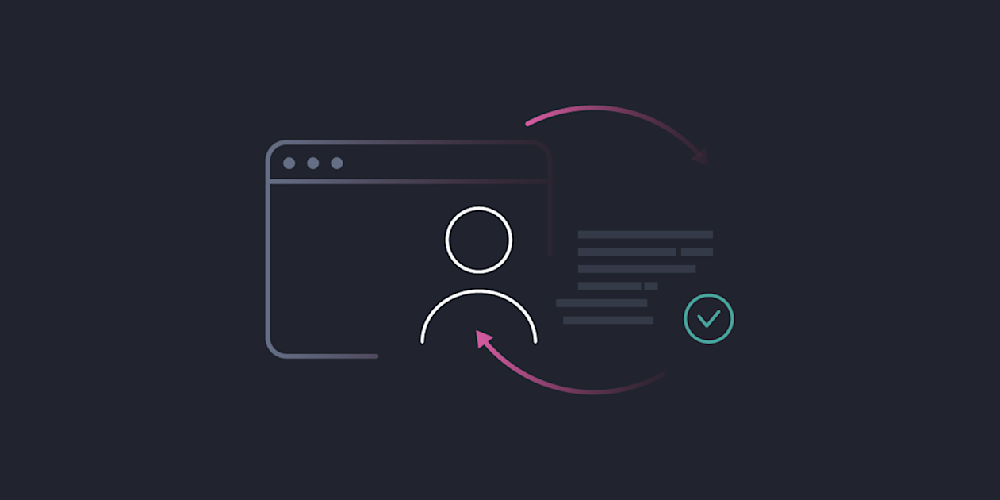
Identity Enables Digital Transformation Success
At the core of most digital transformation initiatives is a growing demand for scale as more functions are digitized, the number of applications exponentially grows, and organizations focus on acquiring more customers and serving more stakeholders online. Inevitably, the resulting increase in data and operational pressure exceeds the capabilities of individual systems and devolves into an architectural problem.
Monolithic systems that once adequately served the organization’s needs can no longer provide the fine-grained, customized functionality or multi-channel diversity required to stay competitive in today’s digital world. It is not uncommon during digital transformation initiatives for each department, business unit, or regional location to start adding specialized online tools and solutions to accommodate specific use cases.
The result is an infrastructure that morphs beyond the internal network into a tangled mass of various web apps, mobile solutions, cloud products, and AI tools - all connected to the network with individual APIs.
Digital Transformation Can Create Painful Challenges
Several challenges often arise for organizations as they undergo the digital transformation process. Multi-channel, multi-solution environments inadvertently create new problems that must be addressed before the full potential of digital transformation can be realized. These challenges include:
Additional security vulnerabilities
As more applications are added throughout the organization, the result is a proliferation of APIs introducing new entry points into the network. These connection points could include hidden vulnerabilities that attackers can exploit to gain access to systems and data.
Data silos
Adding new applications and systems introduces data sources not connected to existing data repositories within the organization. Data silos create another layer of challenges in the form of duplicate and incomplete records. Isolated data also poses cybersecurity risks by making it possible for attackers to gain entry undetected.
Inconsistent user experiences
When architectures are cobbled together during the digital transformation process, the result is often user experiences that vary between applications. In some cases, users may have multiple logins to access different services, causing frustration and poor customer engagement.
Inefficient data management
Without a unifying strategy, digitizing parts of the business can create a data environment that is difficult to manage consistently throughout the organization. Managing data and security best practices across disparate and decentralized applications becomes a daunting and resource-intensive challenge.
Regulatory violations
Inconsistent data management capabilities make it impossible to uniformly roll out and maintain privacy and security measures that adhere to mandates and laws. When security controls must be applied manually and individually to each API, it is difficult to ensure all areas of the organization comply.
Identity Management Is the Common Denominator for a Solution
Identity management intersects many of the challenges that digital transformation introduces. When the network is dispersed into a collection of external APIs and disparate systems, technology teams must rethink how information flows throughout the organization, and most importantly, how access to that information is controlled.
It is no longer enough to manage identity access and authorization at the perimeter of the network. Identity management must be woven into the fabric of the architecture in order to maintain security.
The good news is that managing identities correctly addresses many of the challenges inherent in digital transformation efforts. Connecting data to identities instead of use cases or departments can help break down data silos, deliver consistent user experiences, and facilitate efficient data management on the backend.
Similarly, strong identity management practices make it easier for organizations to uniformly implement data privacy and security protections across all APIs and data entry points in compliance with data management laws and regulations.
Integrate CIAM and IAM to Drive Digital Initiatives Forward
Customer Identity and Access Management (CIAM) allows organizations to create an identity layer that overlays data management abilities throughout the entire infrastructure. CIAM goes beyond access authentication and authorization. It provides a comprehensive identity interface for consumer-facing systems and applications.
A solid CIAM solution also gives organizations tools to deliver innovative digital experiences that help maintain a competitive edge. It establishes a centralized, efficient way to manage features, access policies, and security measures consistently across all APIs now as well as those introduced in the future.
What’s more, a robust CIAM solution enables integration with internal Identity and Access Management functions. For most businesses, a large number of APIs are associated with workforce systems. Even customer-facing applications are usually tied to back-end employee-facing solutions. Integrating CIAM with workforce IAM allows teams to effectively manage the flow of information securely across the network.
Consider implementing a CIAM and IAM architecture based on tokens to ensure that security controls are enforced at each and every API entry point. The best CIAM solutions support token-based architectures with fine-grained capabilities, enabling development teams to leverage OAuth and OpenID Connect industry standards for distributed authorization over all APIs.
CIAM Enables Ongoing Digital Transformation
Digital transformation is not a single point-in-time event. Technology continues to evolve, making digital transformation an ongoing part of doing business and keeping up with market demands.
The right CIAM solution can be a powerful ally in the continuous improvement and growth of digital operations and services. It can function as a unifying platform for managing APIs while ensuring streamlined customer experiences and employee productivity.




